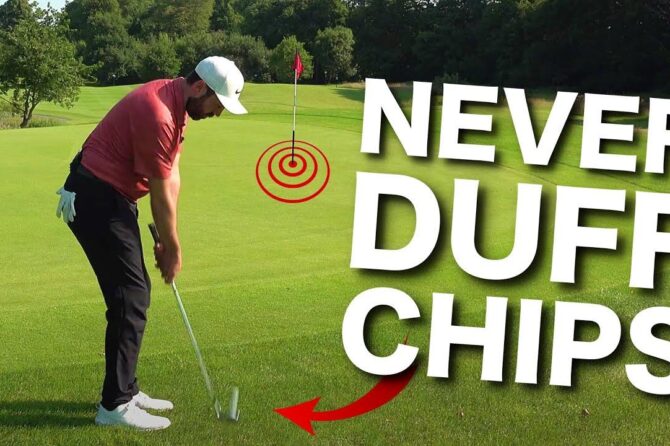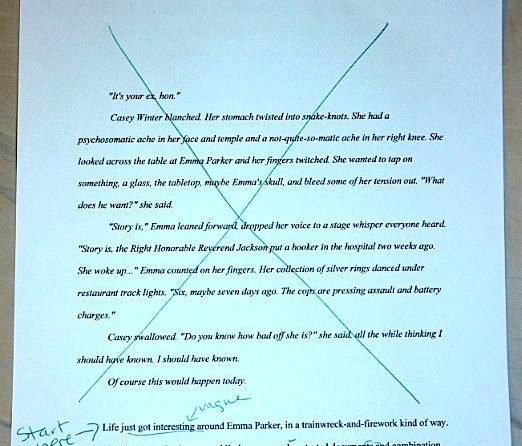Bobby Locke stands as a pivotal figure in the evolution of golf instruction, renowned not only for his prodigious talent on the course but also for his innovative instructional philosophies. His unique approach to the game transcended conventional methods, melding a profound understanding of mechanics with precision-driven techniques. Locke’s emphasis on the mental and physical aspects of golfing instruction shifted the focus from mere performance to a deeper comprehension of the game’s core principles. By integrating these elements, he established a framework that has influenced generations of golfers, shedding light on the intricacies of swing dynamics and putting precision.This exploration of Locke’s instructional legacy provides an essential perspective on how his methodologies continue to reshape and enhance player performance, thereby redefining mastery in the sport.
Understanding the Fundamental Principles of Bobby Locke’s Golf Instruction
Bobby Locke’s golf instruction is rooted in a holistic approach to the game, emphasizing the integration of physical technique and mental acuity.His teachings are particularly focused on the following fundamental principles:
- Muscular relaxation: Locke firmly believed that tension was the adversary of a smooth swing. Through relaxation techniques, golfers can enhance their performance.
- Focus on the Target: A key element of Locke’s beliefs is the mental aspect of aiming. He advocated for visualizing targets not just as points but as mental markers that engage the player’s concentration.
- Practice with Purpose: Locke stressed the significance of decisive practice routines that aim to improve specific skills, thereby fostering a sense of confidence on the course.
The Locke Method encompasses a profound understanding of the golf swing mechanics. Practitioners are encouraged to break down their swing into manageable components. This includes:
| Component | Description |
|---|---|
| Grip | A control point that is central to executing precise shots. |
| stance | The foundation of balance wich influences power and accuracy. |
| Follow-Through | An essential part of the swing that ensures energy transfer and shot direction. |
Locke’s instructional legacy also emphasizes the importance of psychological resilience. He believed that a golfer’s mindset could drastically affect performance levels. The following strategies are essential:
- Positive Visualization: Imagining accomplished shots can enhance confidence and execution.
- Breathing Techniques: A steady breath helps in maintaining focus and reducing anxiety during critical shots.
- Self-Reflection: Athletes should analyze their performance critically to identify areas for enhancement while celebrating successes.
The Role of Mental Resilience in Locke’s Approach to Golf Mastery
Bobby Locke’s approach to mastery in golf is not solely rooted in physical technique but also significantly influenced by the pivotal role of mental resilience. Locke firmly believed that a golfer’s ability to maintain composure under pressure could be as crucial as technical proficiency. His experiences taught him to embrace challenges and view them as opportunities for growth, which he instilled in his students. This philosophy is critical in navigating the mental landscape of competitive golf, were fluctuations in performance can lead to doubt and frustration.
To cultivate a robust mental framework,Locke emphasized the importance of the following elements:
- focus: Maintaining concentration on the task at hand,free from distractions.
- Confidence: Believing in one’s abilities and previous successes to bolster self-assurance during play.
- Adaptability: Adjusting strategies and techniques according to evolving circumstances on the course.
Furthermore, Locke’s emphasis on visualizing successful outcomes before execution highlights the connection between mental imagery and physical performance. he taught that envisioning the ball’s trajectory and the resulting shot reinforces confidence and mastery. This technique not only aids in mental readiness but also solidifies the neural pathways critical for effective execution. As such, Locke’s teachings serve as a reminder that true mastery extends beyond physical skills to encompass the mental fortitude required to withstand the rigors of competitive play.
Techniques for Enhancing Precision and Consistency in Your Swing
To achieve greater accuracy in your golf swing, it is essential to prioritize the foundational elements of your technique. **Proper grip** and **stance** play a critical role in establishing a fluid motion that leads to consistent shot-making. When gripping the club, consider the following key points:
- Maintain a **neutral grip** to prevent hooking or slicing the ball.
- Position your hands so that the **V shapes** formed between your thumb and forefinger point toward your right shoulder (for right-handed golfers).
- Ensure your **stance width** matches your shoulder width to enhance stability throughout your swing.
This stability can be further enhanced by focusing on your **posture**, which impacts both your balance and your swing path. An effective posture involves bending slightly at the hips while keeping your back straight and knees relaxed. A well-aligned spine contributes to a more natural swing arc, allowing for a more seamless transition from backswing to downswing. To enforce these mechanics, golfers may consider utilizing video analysis or working with a coach to receive constructive feedback on their body position.
Lastly, incorporating **drills** centering on timing and rhythm can vastly improve overall consistency. Drills such as the **lag putt drill** or the **balance drill** encourage smooth transitions and reinforce muscle memory. For example, the lag putt drill builds touch and feel, while the balance drill highlights the importance of weight distribution throughout the swing. Maintaining a focus on these elements can lead to significant growth in not just precision,but also overall game enjoyment.
the Integration of Short Game Strategies in Locke’s Instruction
Bobby Locke’s approach to golf instruction emphasizes the significance of the short game, an area often overlooked by players aspiring to improve their overall performance. Locke’s methodology integrates a series of foundational strategies that enable golfers to enhance their mastery over critical aspects like chipping, pitching, and putting. By focusing on the art of precision, he instills a sense of ownership in each stroke, allowing players to refine their skills through consistent practice and mindful execution.
- Technique Refinement: Locke advocates for a meticulous focus on grip and stance, recognizing that these elements directly influence the effectiveness of short game shots. By encouraging golfers to experiment with different grips and postures, he fosters adaptability, enabling them to navigate various lie conditions effectively.
- Strategic Mindset: incorporating a tactical approach, Locke teaches players to assess each shot meticulously. This involves an evaluation of factors such as slope, grain, and distance to the pin. By developing a strategic mindset, golfers can make more informed decisions, ultimately conserving strokes around the green.
- Practice Regimen: Locke emphasizes the necessity of a targeted practice regimen. He suggests allocating specific practice time to short game drills, thus promoting a balanced enhancement of skills. This structured approach to practice ensures that golfers develop their short game as thoroughly as their long game.
| Short Game Strategy | Description |
|---|---|
| Technique Refinement | Experimentation with different grips and stances to improve shot effectiveness. |
| Strategic Mindset | Assessment of environmental variables for informed decision-making. |
| Practice Regimen | Dedicated practice sessions targeting various aspects of the short game. |
Through the integration of these strategies, Locke’s instruction provides golfers with a robust framework to develop their short game skill set comprehensively. The combination of refined technique, strategic thinking, and focused practice fosters a level of competency that not only enhances individual performance but also cultivates a deeper appreciation for the game’s nuance. His emphasis on the short game underscores its critical role in achieving overall golfing success.
Evaluating the Impact of Bobby Locke’s Philosophy on Modern Golf Training
The teachings of bobby Locke have made a profound impact on the contemporary landscape of golf instruction, where his emphasis on biomechanics and precision resonates strongly with modern training methodologies. Locke’s innovative philosophy highlights the significance of understanding the swing as a carefully choreographed movement rather than a mere set of mechanical actions. This shift in perspective encourages golfers to develop a more holistic grasp of their game, integrating physical skill with mental acuity. Notably, Locke emphasized the relationship between grip and stance, which established key fundamentals for aspiring golfers.
- Biomechanical efficiency: Locke’s focus on the mechanics of the golf swing allows modern instructors to dissect and analyze swings using contemporary technology, resulting in more tailored training programs.
- Precision Over Power: He advocated for accuracy as a vital component of mastering the game, encouraging players to prioritize precision in their shots.
- Mental Resilience: An emphasis on the psychological aspects of golf,such as maintaining focus and managing pressure,has been incorporated into training sessions,enhancing overall performance.
Furthermore, Locke’s meticulous attention to detail has opened pathways for developing structured training regimens that combine practical and theoretical components. Many modern instructors draw on Locke’s principles to create a extensive curriculum that includes both technical skills and mental conditioning. This dual focus not only fosters a deeper understanding of golf mechanics but also prepares players to handle the emotional challenges of competitive play. the analytical approach inspired by Locke can be observed in various contemporary training tools and programs that utilize video analysis and biomechanics.
| Key Principles of Locke’s Instruction | Modern Applications |
|---|---|
| Grip and Stance | Customized grip analysis tools |
| Focus on Accuracy | Precision training drills |
| Mental Conditioning | mental resilience workshops |
Bobby Locke’s contributions to the field of golf instruction are both profound and enduring, establishing a legacy that continues to inform and elevate the game today.His innovative techniques, grounded in a meticulous understanding of biomechanics and precision, have redefined the parameters of mastery within the sport. By emphasizing crucial elements such as grip, stance, and ball striking, Locke equipped golfers not only with skills, but with a deeper appreciation for the nuances of their craft. Thus, the principles and methodologies he championed serve as an invaluable resource for aspiring players and seasoned professionals alike, urging them to pursue excellence with both determination and finesse. As we reflect on Locke’s impact,it becomes evident that his insights transcend time,marking a pivotal chapter in the evolution of golf instruction that inspires continual advancement and refinement within the golfing community.





